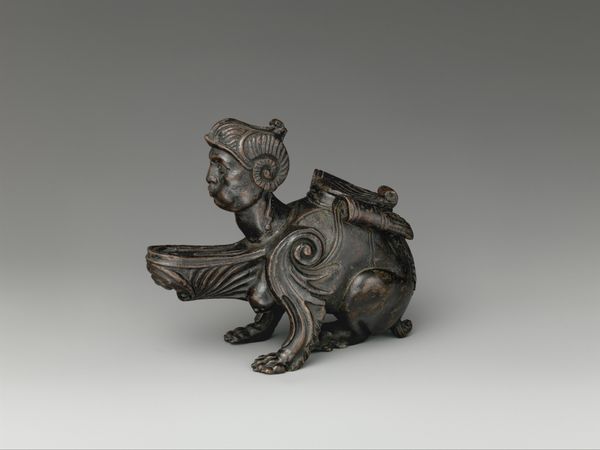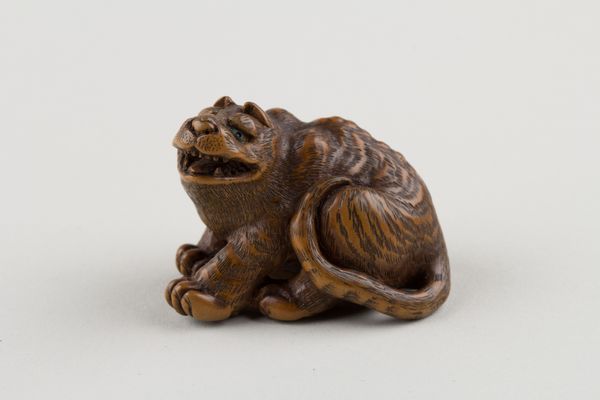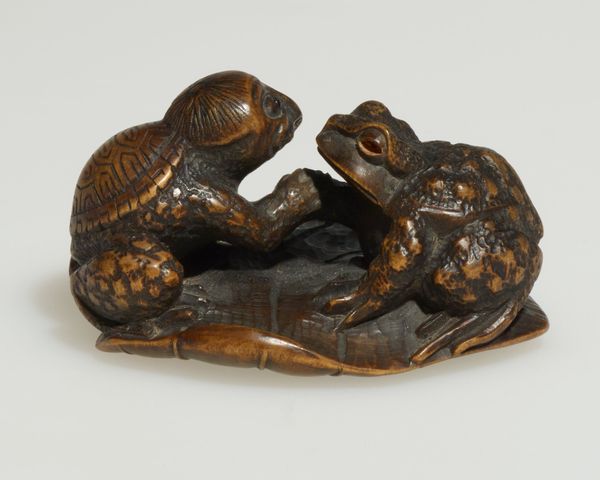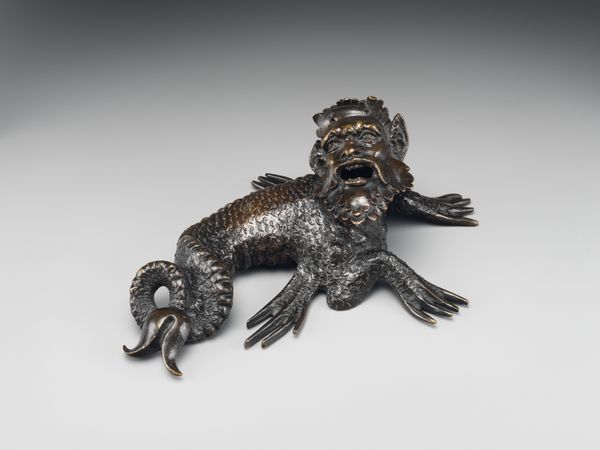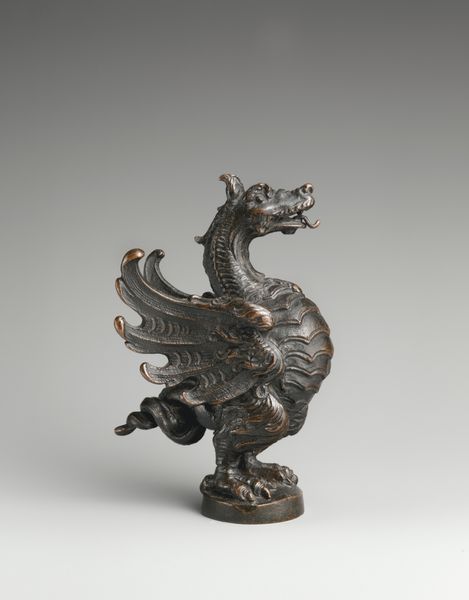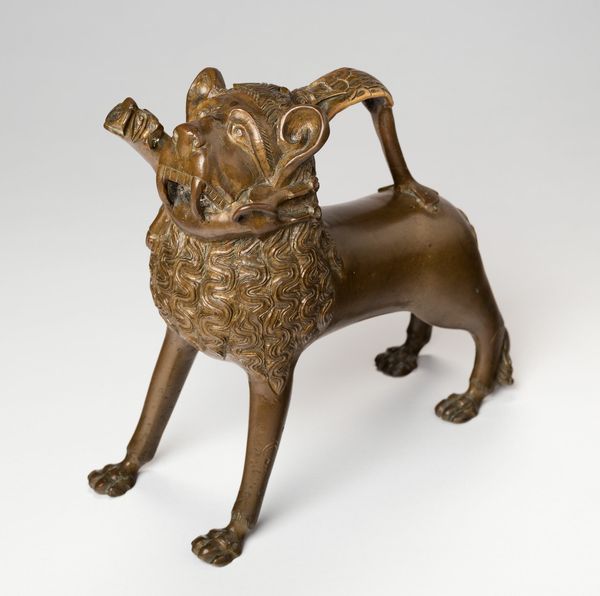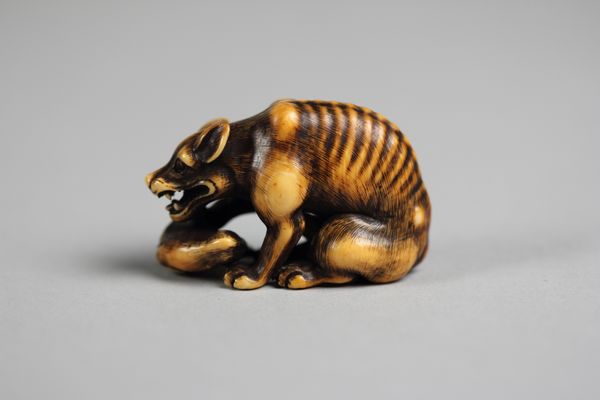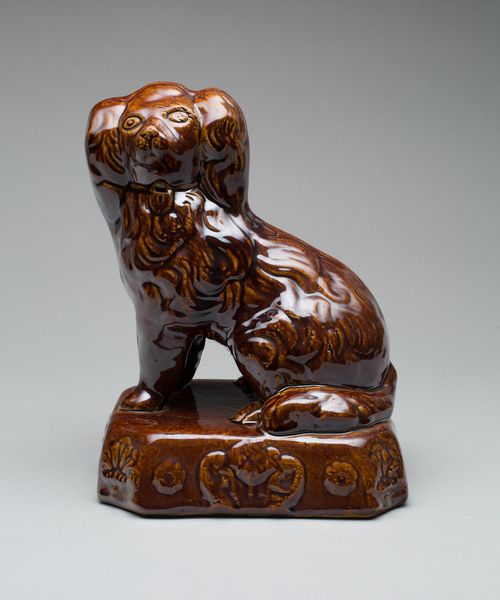
carving, sculpture, wood
#
carving
#
asian-art
#
figuration
#
sculpture
#
wood
#
miniature
Dimensions: H. 2 in. (5.1 cm); W. 2 1/4 in. (5.7 cm); D. 1 1/2 in. (3.8 cm)
Copyright: Public Domain
Curator: Wow, check out the wild energy practically bursting from this tiny thing! Editor: Indeed. We're looking at an 18th-century wood carving titled *Crouching Baku (Mythical Creature)*, made by Sadatake. The Metropolitan Museum of Art is where it now resides. Curator: Mythical creature is right! It's like a fever dream shrunk down and made adorable, in a ferocious kind of way. It’s so small, yet feels ready to pounce! Is it gilded, too? It gives the creature such an extraordinary sheen. Editor: There are traces of gold, yes, hinting at its potential preciousness and protective qualities within its original cultural context. These baku, dream-eating creatures, became very popular in Japanese art starting in the Edo period. Prints, sculptures and so on. Curator: Dream eater! Perfect. That slightly deranged, concentrated look in its eye totally tracks now. Makes you wonder what kind of nightmares people were having back then. Editor: The fascinating thing is how these images were themselves tools for coping with anxiety, with political and economic upheaval. Think of these baku carvings as material talismans of emotional and cultural resilience. Curator: That's amazing—tiny guardians of the psyche! And this particular artist, Sadatake—they really nailed that balance of fierce and… well, almost cuddly. Is there some lion in its ancestry I can imagine? Editor: Baku are generally considered chimerical, owing visual qualities to various animals—the body of a bear, an elephant’s trunk, the eyes of a rhinoceros, a lion’s tail. Its cultural power derived from China where similar beliefs have been current for centuries. This sculpture embodies this exchange of imagery as an integral element of material culture. Curator: Oh, wow, it's a whole mental menagerie crammed into one miniature guardian. Suddenly, its power feels amplified. Now I see even MORE stories tangled up in this little marvel. It has me seeing even beyond my dreams! Editor: I’d agree. Sadatake created not just an object, but a lens— focusing anxieties, while transforming the act of viewership into an opportunity to re-imagine the collective stories we project onto it.
Comments
No comments
Be the first to comment and join the conversation on the ultimate creative platform.

